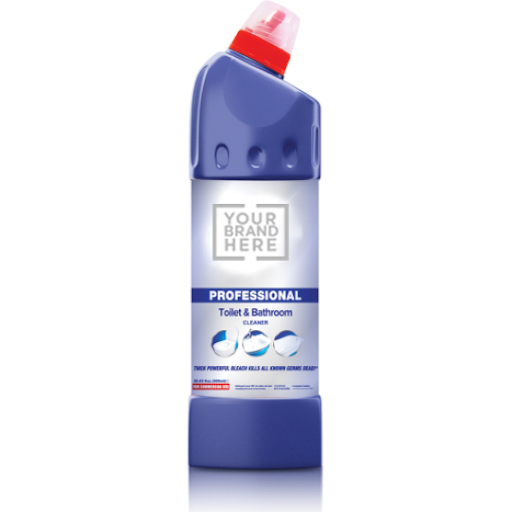Introducing a private label toilet wash liquid is a process that involves planning and implementation. This guide provides key considerations that any business needs to make when considering collaborating with a third party manufacturer. Paying attention to the market research, formulation, manufacturing processes, and compliance needs, entrepreneurs are able to build a competitive product. Well-defined goals and complete testing at every step facilitate development.
1.Market research and product positioning
The proprietor of the private label should thoroughly research the market before approaching any manufacturer to learn more about what customers are expecting in terms of prices and distributors. Competitive analysis of toilet wash liquid demonstrates the trends in formulation, including the scent profiles, cleaning efficacy, and eco-friendly claims, which appeal to target demographics. This information assists in product positioning through unique selling propositions such as better germ kill performance, biodegradable ingredients or concentrated formulas. A clear value proposition is useful in composing a product brief to the manufacturer so that both parties are aligned on feature set and target cost structure. Also, sample testing panels can be used to optimise scent and viscosity, improving development cycles. Successful positioning at this level builds the basis of packaging design, claims on labels, and promotional messages, which eventually determine the retail acceptance and consumer loyalty.
2.Selecting and vetting a third party manufacturer
Selecting the appropriate contract manufacturer is important. The owner of a private label should consider the production potential, technical skills, and compliance history of potential partners. Good Manufacturing Practices (GMP), quality control labs, and environmental health and safety procedures should be checked through site audits. Technical discussions identify the capability of the manufacturer to process certain chemistries, such as surfactant blends, pH modifications, and viscosity modifiers, as well as meet shelf-life requirements. The commercial conditions such as minimum order quantities, lead times and price tiers should be consistent with the brand launch strategy and the anticipated level of sales. Clear communication on confidentiality and intellectual protection- via nondisclosure agreements- safeguard unique formulations. Lastly, reference checks of current customers will assist in validating reliability and timely delivery. Thorough vetting of capabilities and compliance will help the private label owner avoid production risks and find a partner who can grow with the future demand.
3.Developing formulation, packaging, and labeling
Collaborative formulation is initiated with a manufacturer involved. The product brief of the desired foam, cleaning power, fragrance profile is supplied by the brand owner, and lab trials are performed by the R&D team of the manufacturer. Iterative testing assesses dilution ratios, the compatibility of materials, and their antimicrobial activity, to achieve regulatory limits. At the same time, packaging engineers produce bottles, closures, and dispensing systems which facilitate shelf attraction and consumer convenience. Label copy must match legally mandated ingredient statements, warnings and uses, presented in a format that is regionally compliant. Graphic file proofing guarantees proper reproduction of color and bar code placement. Drop tests and consumer usability feedback can be conducted using prototype samples, determining any ergonomic and dispensing problems. The manufacturer then locks into tooling and production scheduling, and a pilot batch is established to form the foundation of stability testing, certification submissions, and early market seeding.
4.Ensuring quality assurance and regulatory compliance
Preserving product integrity requires stringent quality assurance standards during production. All batches are tested on pH level, viscosity, microbial limits, and active ingredient concentration to confirm compliance with approved specifications. Shipments are accompanied by Certificates of Analysis (CoA), which document compliance. At the same time, the private label organisation should obtain the required regulatory clearances, including SDS documentation under chemical safety requirements and any local cosmetic or cleaning product registrations. A statement such as antibacterial or biodegradable should be supported by laboratory results. Marketing teams need to use the product as the best toilet bowl cleaning liquid only when there is empirical efficacy data to support such a claim. Label claims and advertising copy should not mislead statements, or face recall and fines. Implementing an effective batch‑tracking system and regular site inspections will shore up accountability so that deviations can be corrected promptly, and consumer confidence will be maintained.
5.Crafting a marketing strategy and launch execution
Once the product is approved and the production is ramped up, the private label brand needs to carry out a focused marketing campaign to generate awareness and adoption. The most important channels are online stores, traditional distributors, and cleaning trade shows. Digital strategies including paid search advertising, email marketing, and teaching demonstration videos emphasize the unique formulation advantages of the product. Community involvement programs such as sampling programs in business premises offer practical testimonies. Selling points should focus on stress-free use, high-dose ratios, and eco-certifications. Merchandising: Retail packaging should comply with requirements in shelf facings and point-of-sale displays. Sales representative training materials are used to ensure efficacy claims are accurately portrayed. Monitoring of post-launch performance through sales and customer feedback enables the optimization of pricing, promotional offers, and channels of distribution. The product is promoted with early customer reviews and targeted incentives in a competitive marketplace crowded with general-purpose cleaning products and floor cleaning solution products.
Conclusion
The key to successful introduction of a private label toilet wash liquid is disciplined research, manufacturer selection, and formulation development. Strict quality checks and labeling make brands credible. An effective marketing strategy makes one visible and accessible to customers. If they go through these systematic steps, businesses will launch a differentiated, reliable product that fulfills market demand and paves the way to sustained business development.







